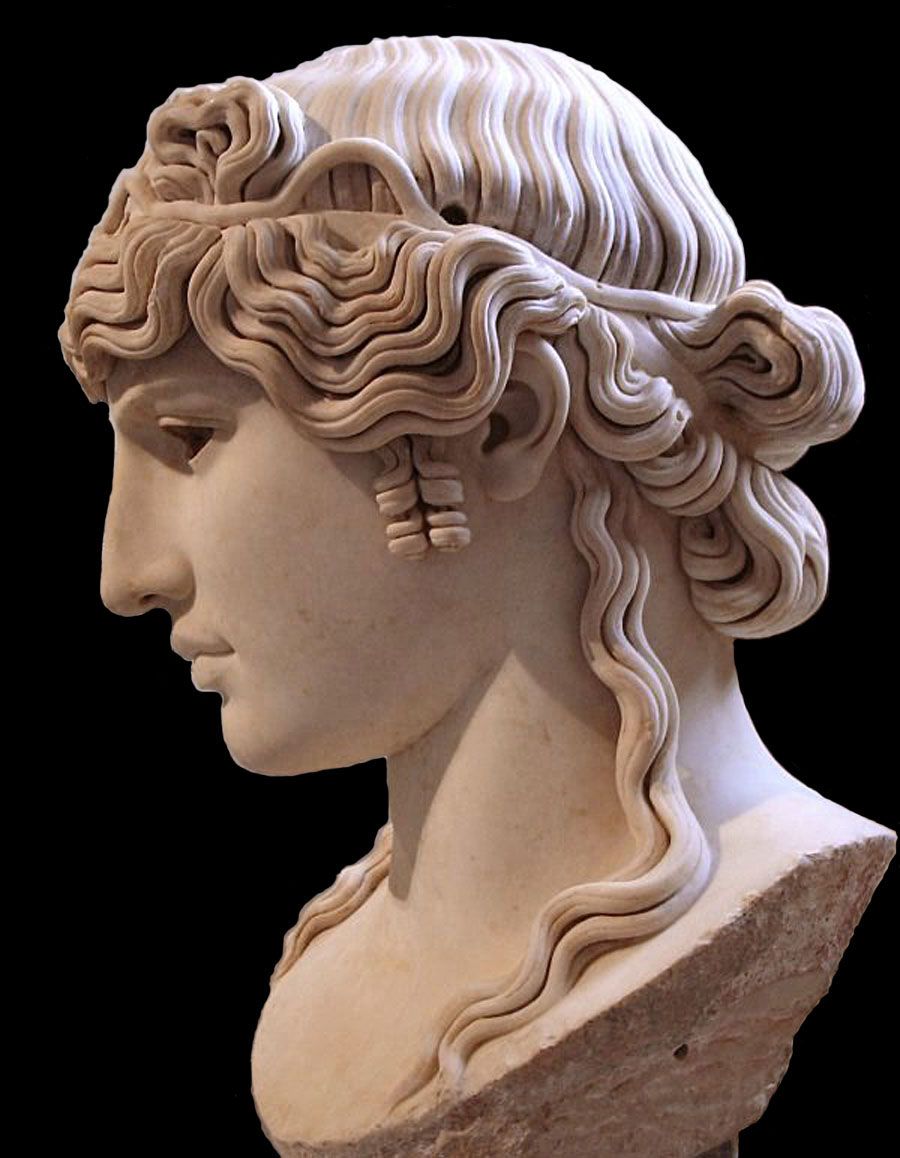Acrolith on:
[Wikipedia]
[Google]
[Amazon]
 An acrolith is a composite
An acrolith is a composite
 An acrolith is a composite
An acrolith is a composite sculpture
Sculpture is the branch of the visual arts that operates in three dimensions. Sculpture is the three-dimensional art work which is physically presented in the dimensions of height, width and depth. It is one of the plastic arts. Durable sc ...
made of stone together with other materials such as wood or inferior stone such as limestone
Limestone ( calcium carbonate ) is a type of carbonate sedimentary rock which is the main source of the material lime. It is composed mostly of the minerals calcite and aragonite, which are different crystal forms of . Limestone forms wh ...
, as in the case of a figure whose clothed parts are made of wood, while the exposed flesh parts such as head, hands, and feet are made of marble. The wood was covered either by drapery or by gilding. This type of statuary was common and widespread in Classical antiquity
Classical antiquity (also the classical era, classical period or classical age) is the period of cultural history between the 8th century BC and the 5th century AD centred on the Mediterranean Sea, comprising the interlocking civilizations ...
.
Greek etymology: ''acros'' and ''lithos'', English translation: "extremity" and "stone".
Similarly, chryselephantine sculpture
Chryselephantine sculpture (from Greek grc, χρυσός, chrysós, gold, label=none, and grc, ελεφάντινος, elephántinos, ivory, label=none) is sculpture made with gold and ivory. Chryselephantine cult statues enjoyed high status ...
used ivory
Ivory is a hard, white material from the tusks (traditionally from elephants) and teeth of animals, that consists mainly of dentine, one of the physical structures of teeth and tusks. The chemical structure of the teeth and tusks of mammals ...
instead of marble, and often gold on parts of the body and ornaments. Acroliths are frequently mentioned by Pausanias (2nd century AD), the best known example being the Athene Areia ("Warlike Athena") of the Plataea
Plataea or Plataia (; grc, Πλάταια), also Plataeae or Plataiai (; grc, Πλαταιαί), was an ancient city, located in Greece in southeastern Boeotia, south of Thebes.Mish, Frederick C., Editor in Chief. “Plataea.” '' Webst ...
ns.
It was common practice in antiquity to drape statues with clothing. "If such statues were draped, only the visible areas of the body, the head, feet and hands needed to be rendered in an attractive material, namely stone. If the statue was not dressed, the wooden part of the body was gilded."
"This type of statue was produced where cost and availability of materials were factors. In areas where there were no native sources, marble was costly since it had to be imported and was therefore reserved for the principal or visible parts of a figure that represented flesh."
Examples of acrolithic sculptures
* ''Athene Areia'' of the Plataeans *''Colossus of Constantine
The ''Colossus of Constantine'' ( it, Statua Colossale di Costantino I) was a many times life-size acrolithic early-4th-century statue depicting the Roman emperor Constantine the Great (''c.'' 280–337), commissioned by himself, which origi ...
''
*''Antinous Mondragone
The ''Antinous Mondragone'' is a high marble example of the Mondragone type of the deified Antinous. This colossal head was made sometime in the period between 130 AD to 138 AD and then is believed to have been rediscovered in the early 18th ce ...
''
* '' Hera Farnese''
* Augustus
Caesar Augustus (born Gaius Octavius; 23 September 63 BC – 19 August AD 14), also known as Octavian, was the first Roman emperor; he reigned from 27 BC until his death in AD 14. He is known for being the founder of the Roman Pr ...
, dea Roma
In ancient Roman religion, Roma was a female deity who personified the city of Rome and more broadly, the Roman state. She was created and promoted to represent and propagate certain of Rome's ideas about itself, and to justify its rule. She was ...
, Tiberius
Tiberius Julius Caesar Augustus (; 16 November 42 BC – 16 March AD 37) was the second Roman emperor. He reigned from AD 14 until 37, succeeding his stepfather, the first Roman emperor Augustus. Tiberius was born in Rome in 42 BC. His father ...
, Livia
Livia Drusilla (30 January 59 BC – 28 September AD 29) was a Roman empress from 27 BC to AD 14 as the wife of Emperor Augustus Caesar. She was known as Julia Augusta after her formal adoption into the Julian family in AD 14.
Livia was the da ...
from Leptis Magna
Leptis or Lepcis Magna, also known by other names in antiquity, was a prominent city of the Carthaginian Empire and Roman Libya at the mouth of the Wadi Lebda in the Mediterranean.
Originally a 7th-centuryBC Phoenician foundation, it was grea ...
in Libya
Libya (; ar, ليبيا, Lībiyā), officially the State of Libya ( ar, دولة ليبيا, Dawlat Lībiyā), is a country in the Maghreb region in North Africa. It is bordered by the Mediterranean Sea to the north, Egypt to the east, Su ...
References
Secondary sources
*External links
*{{commonscatinline, Acrolithic statues Ancient Roman sculpture Ancient Greek sculpture Hellenistic sculpture